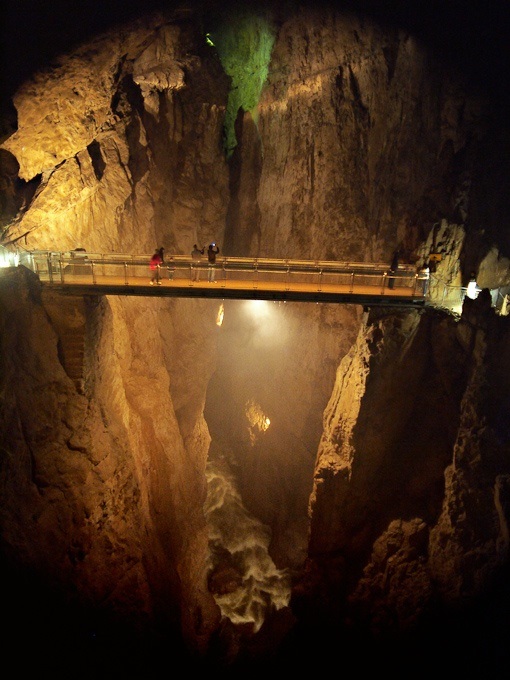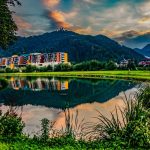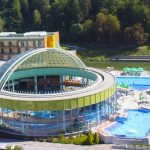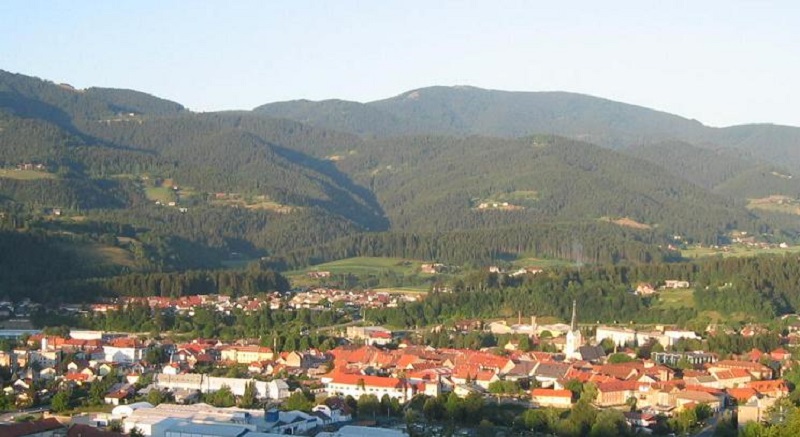Table of Contents
Škocjan caves are under UNESCO protection
Škocjan caves (?Škocjanske jame?), the series of limestone caves are the second most known cave system among Slovenia caves (the first one is Postojna cave) and are located in southwestern Slovenia. Škocjan caves and surrounding Regional Park are under UNESCO protection since 1986.
Škocjan caves are located 1.5km from highway Ljubljana-Koper. Nearest town is Divača, which is about 5km away. Divača has train and bus station as well.
Škocjan caves have been popular among tourist since 18th century and are getting more and more visitors every year. Tourists can enjoy on 3000m of tourist trails and around 500 stair steps. Elevator to Velika dolina is available since 1986.
Several million years of nature hard work
The cave system was created by the river Reka (by the way ?reka? means ?river? in Slovene language) which springs below the plateau of Snežnik. When Reka reaches Karst (limestone surface) it still flows on the surface for few kilometers. When the river disappears underground, its journey on the surface ends with a beautiful waterfall. The river comes back on the surface more than thirty kilometers away near Adriatic coast.
The Škocjan caves system is 6.2 km long. Depth from surface to the lowest point is 223 m; average temperature in the caves is 12°C. There are 26 waterfalls in the cave system. One of the Škocjan caves specialties is an underground canyon of the Reka River (2600m long, 10m-60m wide and up to 146 high). Another interesting sight in the caves is one of the largest underground chambers in Europe, called Martel Chamber (2.2 million m3) two natural bridges, one between Velika and Mala dolina and another in Mala dolina. A natural window in the Mohorčič cave is an attraction as well.
Tourist guides 365 days a year
Škocjan caves, as second most popular Slovenia caves system) are opened for visitors every day in the year. All visits are guided and lasts about and hour and a half. Owing to lower temperatures in the caves and slippery trails warm sweater and sports footwear are recommendable.
At the start of the guide, guides will separate you in five groups, according to your language.
The tour starts at Globočak valley and leads through artificially built tunnel into natural cave, called Silent cave (Tiha jama). The passage at the entrance is interesting because of beautiful stalactites, stalagmites and flow stones. Tour proceeds through Labyrinth into the Great Hall (Velika dvorana). Then you see Müller Hall, cross Cerkevnik Bridge and enter Svetina Hall. You will reach the lowest point of the tour (144m below surface) and move away from the river and climb up to the Rimstone Polls? Hall (Dvorana ponvic). Dayligh is seen again in the Schmidl Hall with beautiful view on up to 165m high walls of Great valley (Velika dolina). At the bottom of Great valley you will see river Reka for the last time and 10m high waterfall. Then you go up to the lift that takes you back on the surface.
Postojna cave vs. Škocjan caves?
Well, I can?t say which one is better, because that depends on your expectations and many other subjective circumstances. But, Škocjan caves are much cheaper than Postojna cave and are offering everything that Postojna cave does (or even more with natural bridges, windows ?), except train ride in the caves. So, my opinion and opinion of many others is that among Slovenia caves Škocjan caves are offering the most for the price paid. But, the decision is up to you. Definitely, both cave systems will impress you; the big difference is only in the price.
For more information about Škocjan caves (prices, guided tours timetable), visit their official website.










 Business tourism is a major part of tourism in the world.
Business tourism is a major part of tourism in the world.